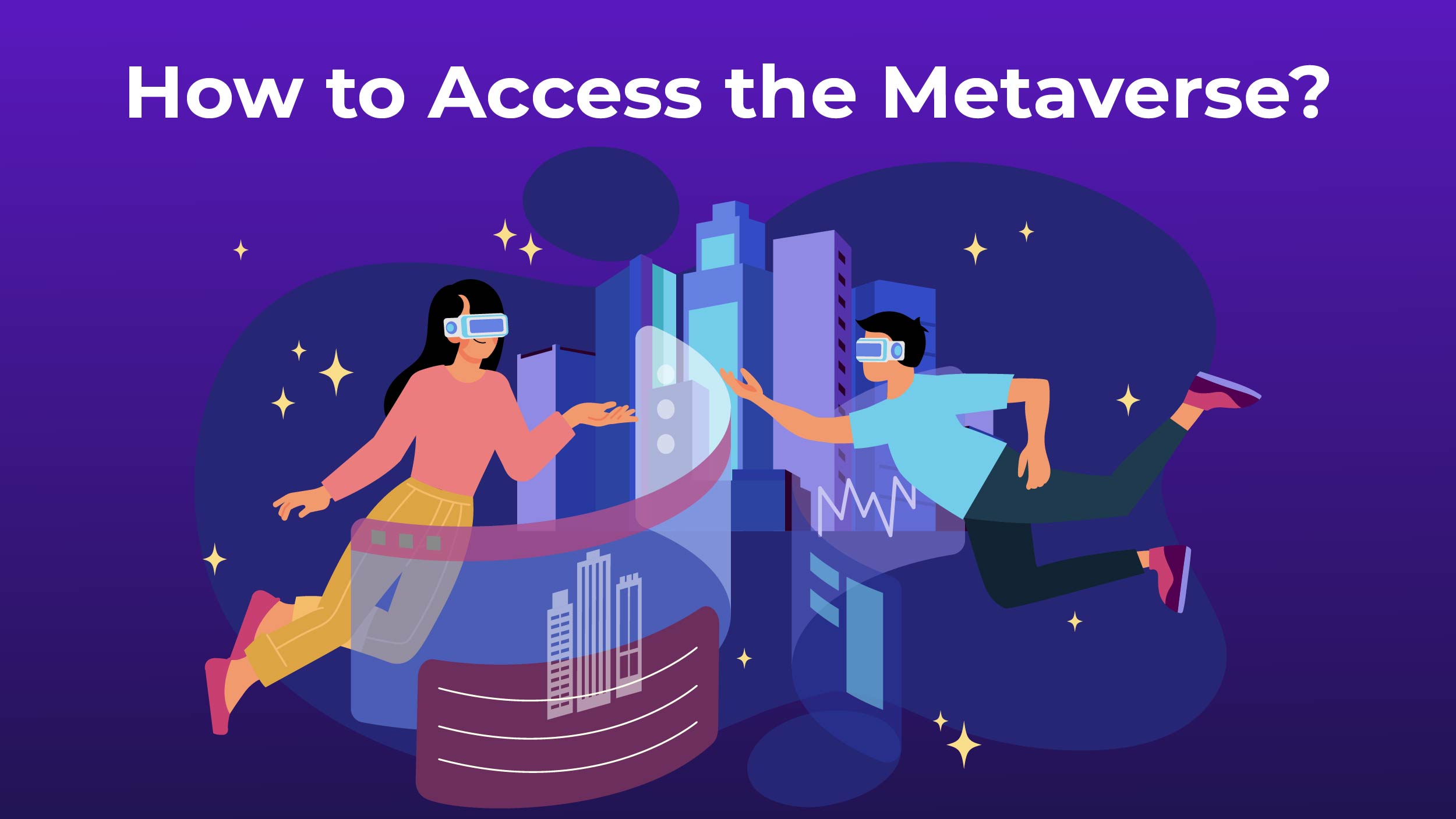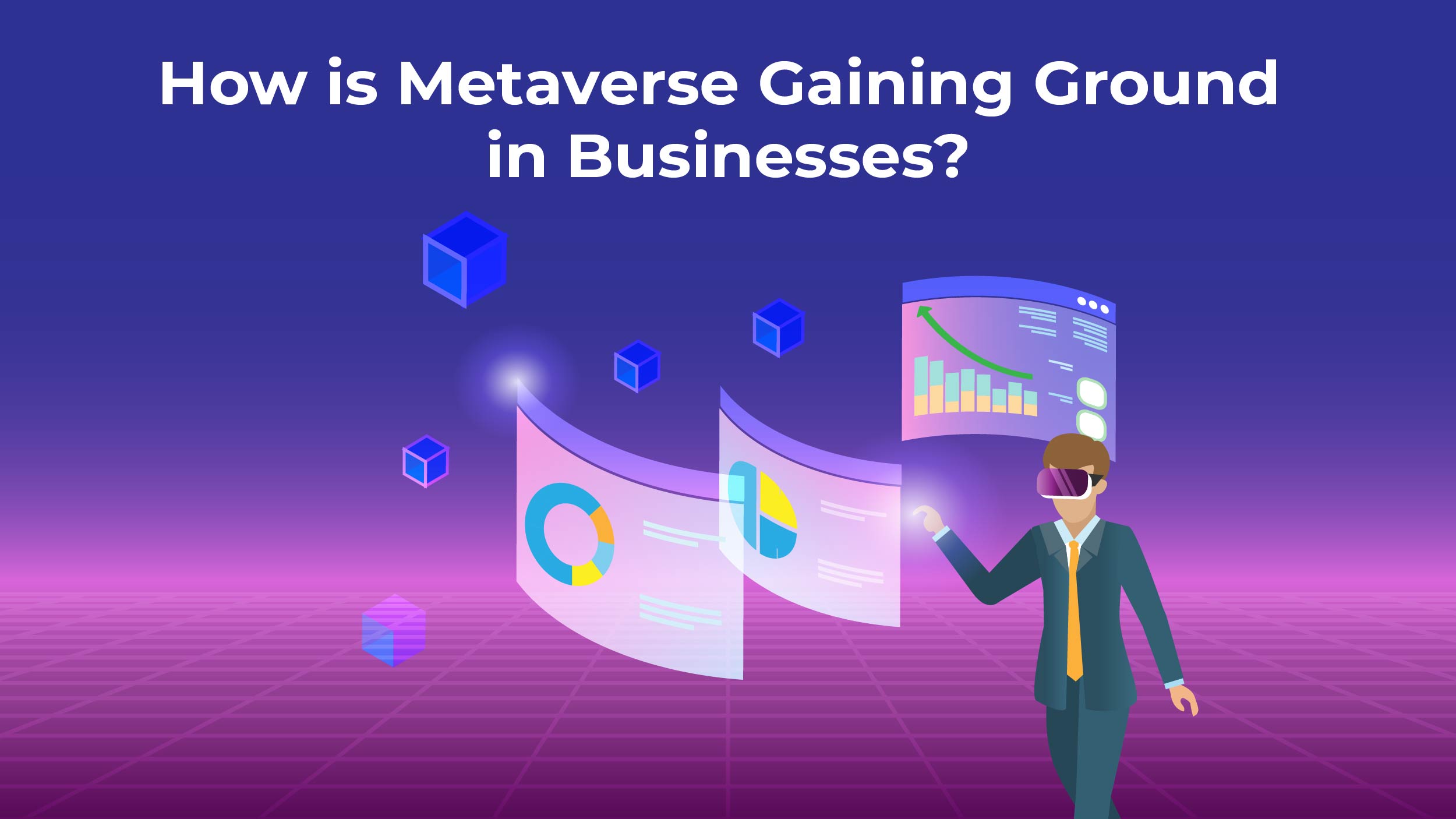Have you heard the buzz about the metaverse lately? It’s not just a concept from sci-fi novels anymore; it’s fast becoming a game-changer in the world of business. Picture a universe where virtual and physical realities merge, opening up a realm of possibilities for companies big and small.
Let’s take a deep dive into the virtual world’s impact on business, leaving no stone unturned.
What is Metaverse?
The “metaverse” is a virtual environment enabling real-time communication and collaboration in a computer-generated space, merging virtual and physical reality for various digital experiences like gaming, socializing, education, and commerce.
Advancements in technology have brought this concept back to the forefront, expanding beyond gaming into a wide range of applications. Unlike a single platform, the metaverse comprises a network of interconnected virtual worlds, akin to navigating through different environments rather than websites.
How to Access the Metaverse?

- Familiarize yourself with the concept: The metaverse is a collection of virtual worlds that replicate real-life experiences, allowing users to socialize, play games, attend events, shop, and more.
- Select a platform: There are several platforms available, such as Decentraland, The Sandbox, and Roblox, each offering unique features and experiences. It’s essential to research and pick a platform that aligns with your interests and objectives.
- Verify hardware requirements: While some platforms necessitate virtual reality (VR) headsets, many are accessible via web browsers using a computer or smartphone. Make sure to review the specific hardware prerequisites of your chosen platform.
- Establish an account: After settling on a platform, you’ll typically need to set up an account. This might involve providing some personal information and agreeing to the platform’s terms of service.
- Enter the virtual world: Once you’ve created an account, you can log into the platform using your credentials. Depending on the platform, you might need to download and install particular software or applications.
- Explore and engage: Upon entering the virtual world, you can start exploring the virtual realms, interacting with fellow users, participating in events, playing games, and taking part in various activities provided by the platform.
How is Metaverse Gaining Ground in Businesses?

Furthermore, the introduction of the business in this has made it easier to conduct business meetings and training sessions in the age of remote working. You and your colleague can use a VR headset to sit around the same table and discuss important issues in a completely immersive environment.
Also Read: Is Email Marketing Still King in the Digital Realm?
The concept is viewed by enthusiasts as the next generation of the internet, a virtual, interconnected reality that is seamlessly woven into our physical world. According to the argument, AR and VR will merge real and virtual, social, consumer, and business experiences.
● Metaverse Application Makes Money
When companies hold meetings using virtual-conferencing apps like Zoom or Microsoft Teams, they make a rudimentary connection to this virtual world. Indeed, much of the value may ultimately be found in business applications, such as virtual meetings and training sessions, new-product design capabilities, or the ability to provide customers with a virtual home or vehicle before purchasing a real one.
Many m-worlds began as gaming applications, but they have since grown to include additional features and attractions. They use a variety of monetization models to build their virtual-asset economies. Traditional approaches, such as subscription, advertising, and in-app purchase models, are included, as are newer, specific methodologies, such as initial asset offerings, and advertising based on metaverse-generated data. The m-world landscape is rapidly changing, with the introduction of major new platforms that will provide a better hybrid, two-dimensional plus AR/VR experience.
● Extending the Reality
AR, VR, and MR technological advancements, collectively known as extended reality, are facilitating the transition from 2D to 3D by providing more realistic experiences and digital displays that are better synchronized with head movements. Indeed, surveys have revealed that the two biggest barriers to broader XR adoption are the user experience and limited content, both of which are rapidly improving. Equipment costs have also decreased, and sales are expected to rise rapidly.
While the number of people using AR and VR grows, mobile AR, which uses smartphone cameras and processing power to superimpose information on what the phone sees, helps bridge the gap. Furthermore, the software development kits available from Apple for iOS and Google for Android can be extended to support AR and VR development. According to ARtillery Intelligence research, 800 million users actively use mobile AR, a figure that is expected to grow to 1.7 billion by 2025.
● Mixing Business with Metaverse
Companies can begin this transition by becoming acquainted with the potential impact of the metaverse. A useful vehicle is an assessment of how the convergence of the three trends described above, namely the rise of m-worlds, advancements in AR, VR, and MR, and the expanding use of Web3 assets enabled by blockchain, may affect the business positively or negatively.
Companies can then focus their efforts on specific areas of this flywheel and potential use cases. Finally, they can choose whether to participate in the creation of this new infrastructure, monetize content and virtual assets, create B2B or B2C content, or even create inward-facing experiences like customer showrooms, virtual conferences, and remote collaboration solutions. They can even choose to attract relevant audiences, including both existing customers and potential customers.
How to Invest in Metaverse?
The virtual world real estate market, often referred to as virtual estate, is already proving to be a highly profitable industry. Major players like JP Morgan, PwC, HSBC, and Samsung have already secured virtual plots for various projects.
Here are several avenues for investing in the virtual environment:
- Exchange-Traded Funds (ETFs): ETFs are investment funds that track the performance of a specific market or industry. Two notable examples are the Global X Virtual Reality (VR) & Augmented Reality ETF and the ARK Next Generation Internet ETF (AWKW), both of which focus on tech firms driving development.
- Metaverse Real Estate: With the technology gaining momentum, investing in virtual property is gaining popularity. Several businesses are entering the market, offering virtual land for sale or even virtual rentals.
- Investment Funds: The virtual world has become a focal point for investment, with numerous funds dedicated to businesses in this realm. Take the VR Vision Fund, for instance, which backs startups working on virtual and augmented reality technologies.
- Stock Investments: Another option is to invest directly in specific metaverse companies by purchasing their stock. Giants like Facebook, Google, and Microsoft are actively involved in shaping its development.
To buy land in the metaverse, choose a platform, set up a crypto wallet, acquire the platform’s cryptocurrency, select and purchase land from the marketplace, and verify ownership on the blockchain.
Final Thoughts
The metaverse isn’t a far-off fantasy; it’s a tangible frontier for businesses to explore. It’s where innovation meets interaction, and where brands can create experiences that transcend the limits of the physical world. While the technology is still in its nascent stages, its potential is boundless, promising to revolutionize how we engage with digital media and communicate with one another.

